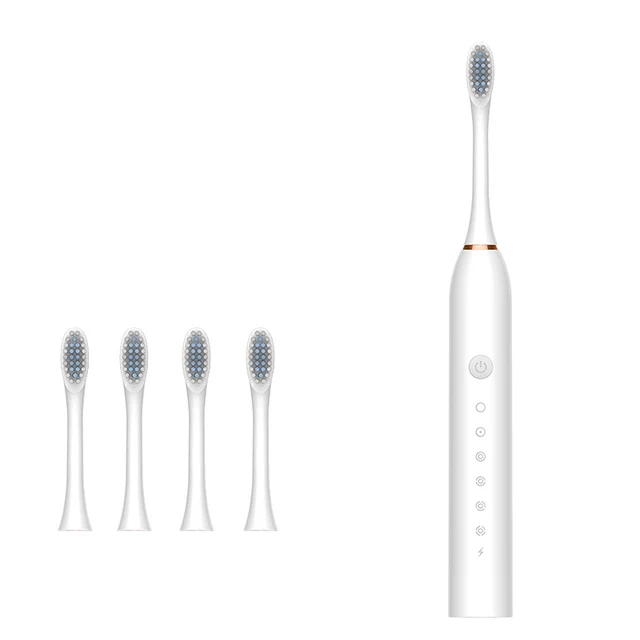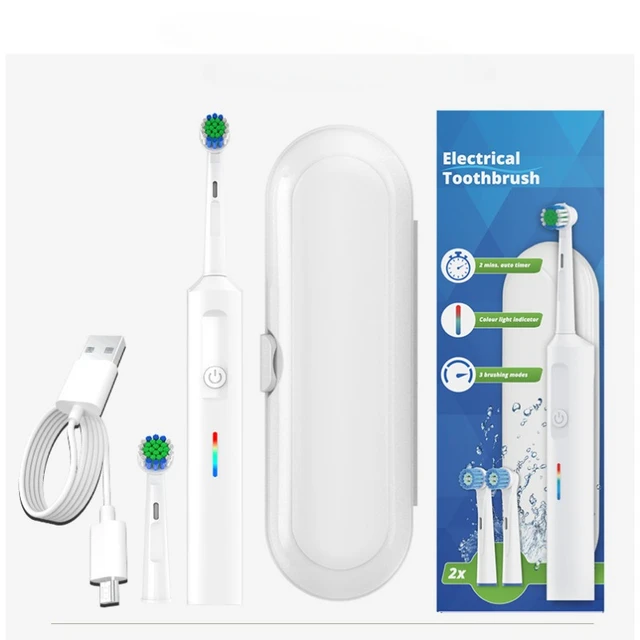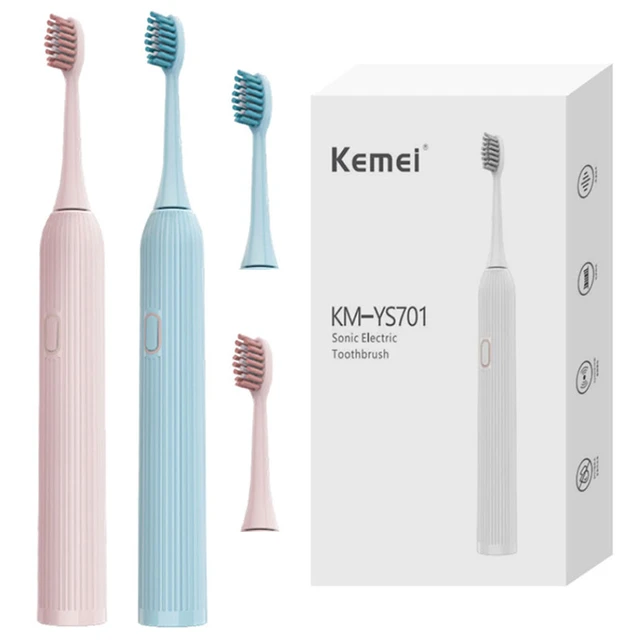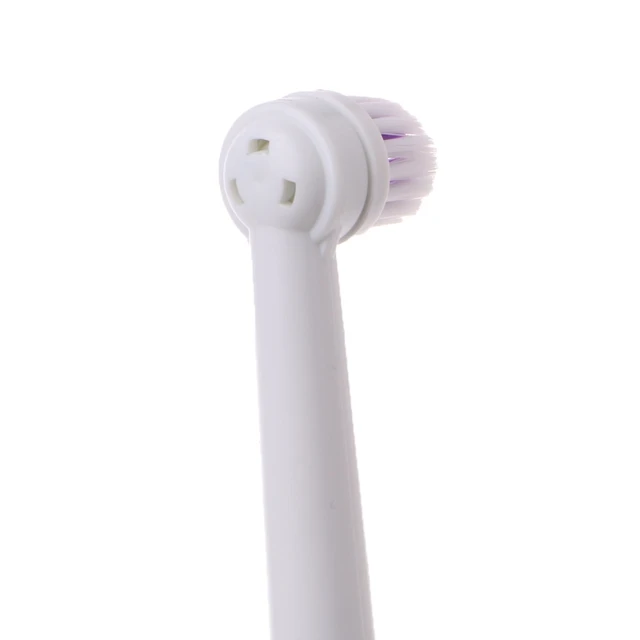Introduction:
Using an electric toothbrush is a convenient and effective way to maintain optimal oral hygiene. However, there can be confusion about the proper brushing technique with an electric toothbrush, particularly whether to brush back and forth or use a different motion. In this guide, we will explore the recommended brushing technique with an electric toothbrush and provide clarity on whether brushing back and forth is the most effective approach. By understanding the proper technique and motion, you can ensure a thorough clean and promote oral health.

Are you supposed to brush back and forth with an electric toothbrush?
Understanding the Motion of an Electric Toothbrush:
Electric toothbrushes typically employ oscillating, rotating, and pulsating motions for effective plaque removal and cleaning. These motions work together to break up plaque and dislodge any trapped food particles. The brush head of an electric toothbrush moves rapidly back and forth or in a circular motion, creating micro vibrations and pulsations that reach into hard-to-reach areas and along the gumline.
The Recommended Brushing Technique:
When using an electric toothbrush, it is generally recommended to employ a gentle, circular motion rather than a back-and-forth motion. Here’s why:
a. Gentle and Controlled Movement: An electric toothbrush is designed to do the work for you. Applying excessive force or using a back-and-forth scrubbing motion can lead to gum irritation, enamel erosion, and potential damage to the toothbrush bristles.
b. Circular Motion: The circular motion ensures that the bristles effectively clean all tooth surfaces and reach the gumline. It allows the brush head to make contact with the teeth and gums from multiple angles, providing a thorough clean.
c. Focus on the Gumline: The circular motion is particularly effective at cleaning along the gumline, where plaque and bacteria tend to accumulate. By angling the brush head at a 45-degree angle towards the gumline and using a gentle circular motion, you can effectively remove plaque and promote healthier gums.

Benefits of Using a Circular Motion:
Utilizing a circular motion when brushing with an electric toothbrush offers several benefits:
a. Improved Plaque Removal: The circular motion allows the bristles to effectively sweep away plaque from the tooth surfaces and along the gumline. This helps prevent the buildup of plaque, reducing the risk of cavities and gum disease.
b. Enhanced Gum Stimulation: By gently moving the brush head in a circular motion along the gumline, you stimulate blood circulation and promote healthier gum tissue. This can contribute to improved gum health and a reduced risk of gum problems.
c. Comprehensive Cleaning: The circular motion ensures that all surfaces of the teeth are covered, including the front, back, and chewing surfaces. It helps remove plaque and debris from hard-to-reach areas, such as the spaces between teeth.
d. Reduced Risk of Injuries: Using a circular motion with gentle pressure minimizes the risk of injuries to the gums, tooth enamel, and toothbrush bristles. It allows for a comfortable and effective cleaning experience without causing unnecessary discomfort or damage.

Other Considerations for Brushing with an Electric Toothbrush:
While the circular motion is the recommended technique for brushing with an electric toothbrush, there are a few additional considerations to keep in mind:
a. Time and Duration: It is essential to brush for the recommended two minutes, regardless of the motion used. Many electric toothbrushes have built-in timers that alert you when the two-minute mark is reached. This ensures that you devote adequate time to thoroughly clean your teeth and gums.
b. Use Gentle Pressure: Avoid applying excessive pressure while brushing, as it can lead to gum irritation and enamel erosion. Let the brush head’s motion and the bristles do the work for you. Gently guide the brush head along the tooth surfaces and gumline.
c. Follow Dentist’s Recommendations: Your dentist is the best source of advice when it comes to your oral health. They can provide personalized guidance on brushing technique, areas that may require additional attention, and any specific oral care concerns you may have. Consult with your dentist regularly to ensure you are maintaining proper oral hygiene with your electric toothbrush.

Tips for Effective Brushing:
In addition to the recommended circular motion, there are a few additional tips for effective brushing with an electric toothbrush:
a. Divide the Mouth into Quadrants:
To ensure that you give equal attention to all areas of your mouth, divide it into four quadrants: upper right, upper left, lower right, and lower left. Spend approximately 30 seconds brushing each quadrant, moving the brush head in a circular motion along the gumline and tooth surfaces.
b. Angle the Brush Head Correctly:
Position the brush head at a 45-degree angle towards the gumline. This allows the bristles to reach the space between the teeth and gums, where plaque tends to accumulate.
c. Pay Attention to Hard-to-Reach Areas:
Focus on cleaning hard-to-reach areas, such as the back molars and the inner surfaces of the teeth. Use the circular motion to thoroughly clean these areas and ensure that no plaque or debris is left behind.
d. Follow a Systematic Pattern:
Develop a systematic pattern for brushing your teeth to ensure that you cover all surfaces. For example, you can start at the back of the upper teeth on one side, move to the front surfaces, then switch to the lower teeth and repeat the process on the other side.
e. Let the Brush Do the Work:
Unlike manual toothbrushes, electric toothbrushes are designed to provide the cleaning action. Avoid applying excessive pressure or scrubbing motions. Instead, gently guide the brush head along the teeth and gums, allowing the bristles to do their job.
f. Clean the Brush Head:
After each use, rinse the brush head thoroughly under running water to remove any toothpaste residue or debris. This helps to maintain the effectiveness of the brush head and prevent the buildup of bacteria.
g. Replace the Brush Head Regularly:
Follow the manufacturer’s recommendations for replacing the brush head. Over time, the bristles can become frayed or worn, reducing their effectiveness. Replacing the brush head ensures optimal cleaning performance.
Consult with Your Dentist:
It’s important to remember that everyone’s oral health needs are unique. While the circular motion is generally recommended, it’s always a good idea to consult with your dentist or dental hygienist. They can provide personalized advice based on your specific oral health needs, such as areas that may require additional attention or any oral care concerns you may have. Regular dental check-ups allow your dentist to monitor your oral health and offer guidance on the best brushing technique for you.

Conclusion:
When using an electric toothbrush, it is generally recommended to employ a gentle circular motion rather than a back-and-forth scrubbing motion. The circular motion ensures thorough cleaning of all tooth surfaces and effectively reaches the gumline. It allows the bristles to sweep away plaque and stimulate gum health. Remember to use gentle pressure, follow the recommended brushing duration, and consult your dentist for personalized guidance. By incorporating the recommended brushing technique with your electric toothbrush, you can achieve a thorough clean and maintain optimal oral health.

